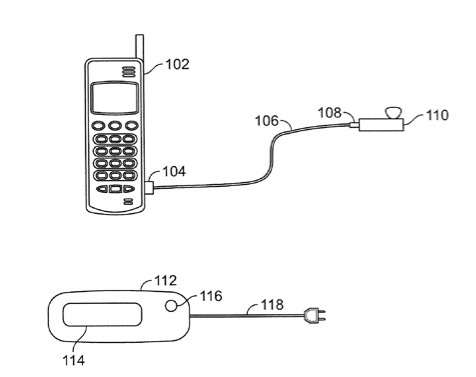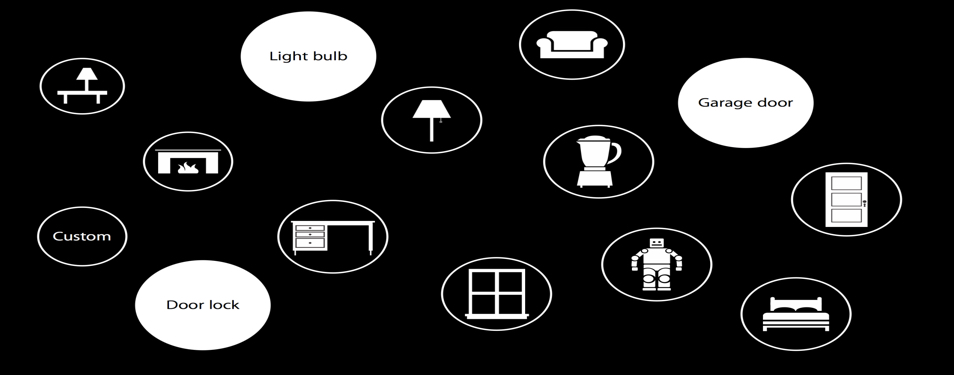An Apple patent (number 20120171964) has appeared at the U.S. Patent & Trademark Office showing that Apple is working on a dual-mode wired/wireless headset for the iPhone and other devices. The patent is for a wireless communication headset with wired and wireless models.
Per the patent, the wireless headset can include a headset connector assembly that can be coupled to a cable connector of a cable, which can in turn be connected to a telephone. When the wireless headset is coupled to the telephone, it can advantageously be operable to exchange audio information with the telephone through the cable, receive electrical power from the telephone through the cable, or both.
In addition, the cable connector can advantageously be coupled to the wireless headset without obstructing airflow to a microphone that is located in the headset connector assembly, through use of apparatus of the invention located on the cable connector, such as an acoustic tunnel, a microphone-speaker pair, or a microphone that is coupled to control circuitry operable to disable the microphone of the headset.
Here’s Apple’s summary of the invention: “In accordance with an embodiment of the invention, a wireless communication headset (e.g., a headset that can communicate with a telephone via Bluetooth communications) can be provided with both wired and wireless modes. The headset can include a headset connector assembly that has at least one headset contact that can be coupled to at least one respective cable contact of a cable connector.
“Such a configuration can be used to transfer power from a telephone, through a cable and the cable connector, to the wireless communication headset, advantageously allowing the headset to be used for a relatively long period of time without having to be recharged through a docking station or a power adapter. In addition to, or instead of, being used to transfer power from the telephone to the wireless communication headset, the electrical connection can be used to exchange audio data between the telephone and the wireless communication headset.
“As such, a user can use a wireless communication headset of the invention to transfer audio data to and from a telephone using both a wireless mode (e.g., via Bluetooth communication) and a wired mode. When the wireless communication headset is coupled to a cable and the cable is connected to a telephone, audio input from the user can be transmitted from the headset to the telephone through the cable. Similarly, the headset can be used to receive audio data, power, or both from the telephone until the cable is decoupled from the telephone or the headset.
“In accordance with embodiments of the invention, a cable connector can be coupled to a headset connector plate assembly without obstructing audio input from a user to a microphone located in the connector plate assembly. The cable connector can include at least one cable contact to be electrically coupled to at least one headset contact of the wireless communication headset. The cable connector can also include, for example, an acoustic tunnel that can be coupled to a microphone boot of the headset to form a substantially continuous seal with the microphone boot. The acoustic tunnel can have an aperture that remains exposed while the cable connector is coupled to the headset connector plate assembly, such that audio input from a user can travel into the aperture of the cable connector, through the acoustic tunnel, through the microphone boot, and to a microphone of the wireless headset.
“As another example, the cable connector can include a microphone that can receive user audio input when the cable connector is coupled to the headset connector plate assembly. The microphone can forward the user audio input to a speaker of the cable connector, which can in turn transmit user audio data corresponding to the user audio input to the microphone boot of the wireless communication headset (e.g., through an acoustic tunnel that is coupled to the microphone boot). Accordingly, an embedded microphone-speaker pair of the cable connector can substantially amplify or repeat the user’s voice into the microphone boot of the wireless communication headset, which is coupled to the microphone of the headset.
“In accordance with yet another embodiment of the invention, the cable connector can include a microphone that can receive user audio input. Control circuitry of the cable connector, which can be coupled to the microphone, can transmit at least one control signal to detection circuitry of the wireless communication headset to disable the microphone that is located on the headset. The control circuitry can then route user audio data corresponding to the user audio input to the telephone through a cable, without using the wireless communication headset.
“The invention can therefore advantageously provide a wireless headset that can operate in both wired and wireless modes, where the headset can receive power from a telephone, exchange audio data with the telephone, or both through a cable when the headset is in the wired mode. The wireless headset can be coupled to the cable without interfering with the ability to receive audio input from a user and transmit data corresponding to the user audio input to the telephone, even though the microphone of the wireless headset can be at least partially obstructed by the connection to the cable.”
John Tang and Brett Alten are the inventors.



